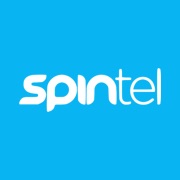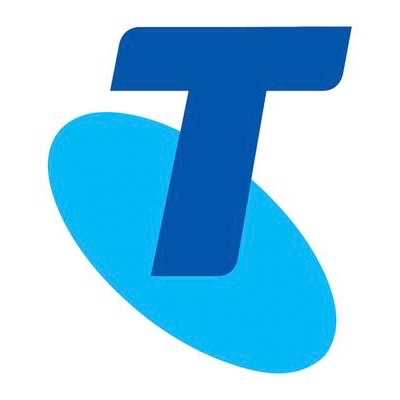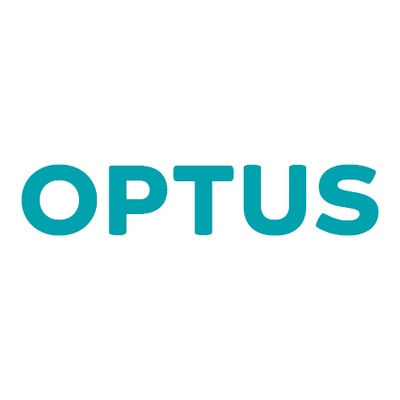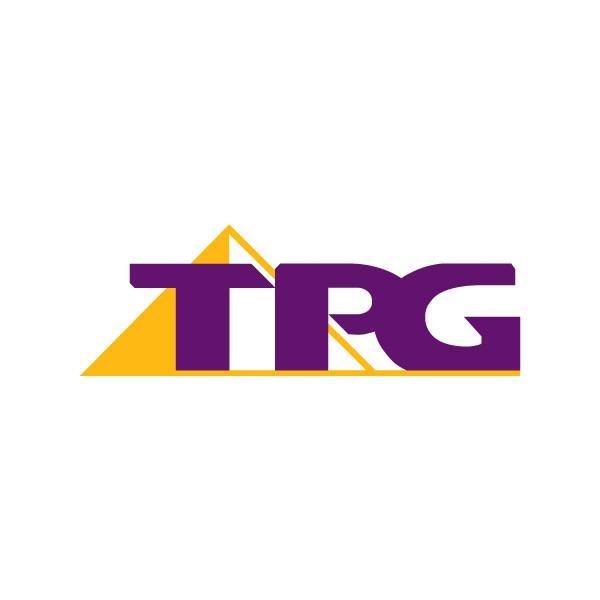A decade after it was first announced the NBN rollout has been declared complete, so the vast majority of Australians now have access to the National Broadband Network in some form.
NBN fibre upgrades are also in the pipeline, with 1.1 million premises around the country set to get a fibre-to-the-premises (FTTP) connection by 2023. This will give users access to higher speed plans such as NBN 250, and we’ve got recommendations so you don’t have to spend a whole lot.
Here, we’ll drill down on the best wired NBN plans currently on offer, whether you’re looking for the most affordable option, the highest speeds or the best overall value. Click the links below to jump ahead to the speed you’re after:
Noteworthy NBN deals
We’ve detailed our plan recommendations below, but before we get into that, we want to highlight some great deals that are currently available on NBN plans:
- Aussie Broadband: get your first month of NBN free (use the code FASTMONTH)
- Internode: save AU$20p/m for 6 months on NBN 50 plans (from AU$59.99)
- MyRepublic: save AU$25p/m for 6 months on NBN 100 plans (from AU$70)
- Tangerine: save AU$15p/m for 6 months on NBN 25, 50, 100 and 250 plans (from AU$44.90)
- Telstra: save AU$15p/m for 12 months on NBN 100, 250 and 1000 plans (from AU$95)
- Superloop: save AU$20p/m for 6 months on NBN 100 and NBN 250 (from AU$69.95)
Best NBN plans
We’ve compared all NBN plans currently available and picked the best plan for each speed tier below.
There are a couple of caveats you should consider when it comes to the high-speed NBN 250 or NBN 1000 plans. These tiers are only available on two types of NBN connection – fibre-to-the-premises (FTTP) and hybrid fibre coaxial (HFC). With NBN 1000 plans, while all FTTP connections can sign up for 1000Mbps, that speed will only work with a select subset of HFC installations – estimated to be roughly 7% of the total.
Best NBN 25 plan
An affordable option for light internet users

If you’re looking at an NBN 25 plan, chances are you just need the internet for everyday browsing. The good news is that if you just want to surf the web casually, it doesn’t matter what ISP you go with. That’s what makes this Tangerine plan our top recommendation – it’s affordable, comes with unlimited data, has a cheap introductory offer and the maximum typical evening speed on NBN 25 (which is 25Mbps). Considering all this, it’s quite comfortably the best overall value plan on offer at this speed.
[A multi-award winner in the 2021 Mozo Experts Choice NBN Awards.]
Total minimum cost: AU$44.90 | Total cost for first year: AU$628.80
• See more: Best NBN 25 plans
Best NBN 50 plan
The best option for most users

As you’ll notice on this page, Spintel and Tangerine are often the two telcos duking it out to claim the best NBN plans, and when it comes to the NBN 50 tier, Spintel has snatched back the title. That’s because it has a low introductory offer of AU$54 a month for the first six months, before increasing to a low ongoing rate of AU$64.95 a month. Tangerine’s offer is a smidge more at AU$54.90p/m for six months, then AU$69.90 ongoing.
Total minimum cost: AU$54 | Total cost for first year: AU$713.70
• See more: Best NBN 50 plans
Best NBN 100 plan
Our top choice for multi-user households and those who want a bit more speed

Spintel has edged out Tangerine this month with the best (and cheapest) NBN 100 plan we can find. You’ll get a discount on your first six months with the service, so you’ll first pay AU$69 a month before the price reverts back to the standard AU$84.95. Even once the initial discount ends, it’s still one of the cheapest options you’ll find in this tier. For the price, you’ll be getting a maxed-out typical evening speed of 100Mbps.
Total minimum cost: AU$69 | Total cost for first year: AU$923.70
• See more: Best NBN 100 plans
Best NBN 250 plan
If you need ludicrous download speeds, this one's a goer

Mate | NBN 250 | Unlimited data | No lock-in contract | AU$99p/m
Mate is doing things a little differently than the other telcos by ditching the standard six-month discount entirely. Instead, you can get Mate’s NBN 250 plan for a low ongoing cost of just AU$99 a month. You’ll find that other providers will be cheaper initially, but Mate is hard to beat for its everyday pricing. Mate says you’ll get a typical evening speed of 208Mbps, but because some TechRadar writer’s have this plan themselves, we can report reaching speeds of up to 265Mbps in the peak period.
[A multi-award winner in the 2021 Mozo Experts Choice NBN Awards.]
Total minimum cost: AU$99 | Total cost for first year: AU$1,188
• See more: Best NBN 250 plans
Best NBN 1000 plan
The fastest you can get, but only available in select locations

MyRepublic is our pick for the best NBN 1000 plan this month, and that’s because it offers a good combination of low initial price, low ongoing cost and a good typical evening speed. You’ll pay a discounted rate of AU$105 a month for your first six months before it increases to AU$135 each billing, which is the cheapest ongoing cost we can find. MyRepublic promises a typical evening speed of 350Mbps on this plan – if you want more than that, you’ll need to jump over to Aussie Broadband which quotes 600Mbps, but is AU$149p/m.
[A multi-award winner in the 2021 Mozo Experts Choice NBN Awards.]
Total minimum cost: AU$105 | Total cost for first year: AU$1,440
• See more: Best NBN 1000 plans
Which is the best NBN provider?

Best NBN provider this month – Spintel
This month, we’ve named Spintel as the best NBN provider. That’s because the telco has killer deals for new customers on its NBN 50 and NBN 100 plans, and good ongoing rates after the six-month discount too. Like most ISPs, you can choose to bring your own modem, while getting one from Spintel will cost you an additional AU$150 – which is a little more expensive than some competitors, but the overall value from Spintel is excellent.
• Click here to learn more about the best NBN provider, and view plans
Understanding NBN speeds: which is right for you?
Choosing an NBN speed tier is arguably the most important decision you’ll make when it comes to getting internet. To figure out which is right for you, factor in how many people will be using the internet in your household and what their usage is like. Here, we’ve broken down each speed tier, and what they get you.
Your connection type can also limit what speed tiers you can access – click here to learn more about NBN connection types, or head to the NBN Co’s website to check what connection is available at your address.
NBN 12 (Basic I): 12Mbps download | 1Mbps upload | Any connection type | 1 user | Suited for a one-person household for browsing the internet, sending emails and watching YouTube videos at 1080p – though this tier is not recommended for lots of streaming.
NBN 25 (Basic II): 25Mbps download | 5Mbps upload | Any connection type | 1-2 users | For one or two people who want to browse the web at the same time, stream music and stream video in 1080p.
NBN 50 (Standard): 50Mbps download | 20Mbps upload | Any connection type | 2-4 users | Allows multiple users to stream in high definition and play games online, and crucially for some, it’s higher uploads are well-suited to working from home – particularly if you need to video chat.
NBN 100 (Fast): 100Mbps download | 20Mbps upload | Any connection type | 5+ users | Suitable for streaming video in 4K, downloading large files and having multiple devices online at the same time.
NBN 250 (Superfast): 250Mbps download | 25Mbps upload | FTTP, HFC connections | 5+ users | Gives you absurdly fast speeds that will let multiple people stream in 4K at the same time, and allow faster downloads of large files such as games and OS updates.
NBN 1000 (Ultrafast): 1000Mbps download | 50Mbps upload | FTTP, HFC connections | 5+ users | Fastest speed tier you can get, but note that there’s considerable difference between the typical evening speeds offered by the few telcos that offer this tier, with the lowest being 200Mbps and the highest reaching 700Mbps (the latter coming from Telstra).
How does switching NBN providers work?
So you’ve done your research and found the NBN provider you want to switch to, what’s next?
Switching NBN providers is usually fairly seamless – your new ISP should take care of the whole process, including informing your current ISP of the change. If you’ve requested a modem/router with your switch, your new ISP will usually wait until that arrives to connect you – your existing service will continue to work as usual in the meantime.
If you’re keeping your current modem/router, then the switch can often happen within 24-48 hours, and will likely require you to change some of your router settings, such as username and password.
There’s one important step to do before finally switching providers, and that is to check the fine print of your current ISP.
If you are currently on a contract with your internet provider, you’ll likely face an exit fee or be required to payout the remaining months on your plan. If this is you, we’d highly recommend reconsidering breaking the contract unless absolutely necessary.
However, even if you’re on a month-to-month plan instead of a contract, you could still face a cancellation fee. For example, TPG requires its users to give a 30-day notice before cancellation, and if this isn’t done, you’ll need to payout the remaining days of the month.
If you find that your current ISP requires you to give notice of cancellation, we’d recommend scheduling the switch with your new NBN provider, so you can avoid any surprise exit fees.
Best NBN plans: major telcos
If you’re looking for an NBN plan from one of Australia’s three major providers, these are our plan recommendations:
Best Telstra NBN plan

If you sign up for Telstra’s NBN 250 plan, you’ll pay a discounted rate of AU$125 a month for your first 12 months, which will save you AU$180 in total. After the discount ends, your bill will increase to AU$140 a month, but you can avoid the price hike by moving down to a lower speed plan if you want. This is one of the more expensive NBN 250 plans, but you’ll be getting a maxed-out typical evening speed of 250Mbps, which is the best on offer. Just keep in mind that if you leave Telstra before 24 months have passed, you’ll need to pay out the Telstra Smart Modem, which costs AU$216.
Total minimum cost: AU$341 (includes modem) | Total cost for first year: AU$1,500
Not the right plan for you? Check out our full comparison of all Telstra’s NBN plans.
Best Optus NBN plan

Optus | NBN 50 | Unlimited data | No lock-in contract | AU$79p/m
Optus has historically performed well in the ACCC’s quarterly report, often achieving the highest average download speed among the telco’s monitored. On Optus’ NBN 50 plan, you’ll get unlimited data and typical download speeds of 50Mbps for AU$79 a month. Optus Sport is also included as standard, and the telco’s modem comes with 4G backup. If you stick with Optus over 36 months, you won’t have to pay for the modem (usually AU$252).
Total minimum cost: AU$331 (includes modem) | Total cost for first year: AU$948
Need a different speed? See our full comparison of all Optus NBN plans
Best TPG NBN plan

TPG | NBN 50 | Unlimited data | 6-month contract | AU$69.99p/m
TPG is a favourite for delivering solid, reliable speeds at a bargain price. The ISP typically ranks well in the ACCC’s reporting, and on this plan, it delivers typical evening speeds of 50Mbps. If you sign up for six months, TPG will waive the usual AU$99 setup fee and throw in an included modem, however a AU$10 modem delivery fee still applies. While this plan is cheaper than what’s on offer from the big telcos, be mindful that you could face a contract payout fee of up to AU$350 if you decide to leave early.
Total minimum cost: AU$429.94 (includes modem) | Total cost for first year: AU$849.88
- Telstra vs Optus NBN: who has better broadband?
More NBN deals
- Want to see other broadband options? You can use our broadband plan finder to compare a huge range of Australian NBN, broadband and cable plans!
Typical evening speed explained
A typical evening speed is the average download speed you can expect on a plan during the peak busy hours of 7pm-11pm. Each telco will quote a typical evening speed on its plans, and this number can vary within the same speed tier, so be sure to check and compare.
In 2021, more internet providers started to claim a maximum typical evening speed, and the Australian Competition and Consumer Commission (ACCC) has found several ISPs are even delivering above that maximum number.
With so many providers offering a fast service, factoring in typical evening speeds isn’t as important as it used to be, but you should still keep an eye out for low numbers. Any NBN provider quoting close to the tier’s top-rated speed is fine, but consider it a big red flag if it’s significantly lower than the norm.
NBN connection types
First, you’ll need to suss out what connection type you have – you can do that by checking your address on the NBN Co website. Your connection type is good to know, as not every NBN plan is supported by every connection, so it’s an easy first step in narrowing down your choices.
While the NBN is made up of a multi-technology mix, it’s important to know that you don’t have a choice in what technology is available to you. Different connection types have been built in different areas, so it’s entirely dependent on where you live. Below, we lay out the connection types across the network, and what they mean.
Fibre-to-the-premises (FTTP): FTTP is a fibre-optic line that runs directly to your home, and therefore is the best type of connection you can have. It requires a device to be installed in your home, and is what was originally intended for every household in Australia when the NBN was first announced.
Fibre-to-the-building (FTTB): An FTTB connection is most commonly used for connecting apartment blocks and similar buildings to the NBN. In this instance, a fibre-optic line runs to the building’s communications room, and existing technology such as copper wiring is used to connect each apartment from there.
Hybrid fibre coaxial (HFC): An HFC connection uses existing pay TV (Foxtel) or cable network as the final connection to households. The HFC line will run from your home to the nearest available fibre node.
Fibre-to-the-curb (FTTC): FTTC is when the fibre-optic cable extends a little closer to your home by connecting to a distribution unit located outside on the street. From there, it uses the copper phone line to run the last leg into your home.
Fibre-to-the-node (FTTN): The majority of Australian households – around 4.7 million – are using FTTN technology. This connection type uses existing copper phone wire to make the final connection to the home from a central node in your neighbourhood. The distance of your home to the node will affect the average speeds you can reach, so if your home is more than 700m from the node, it’s not advisable to choose an NBN 100 plan.
Fixed Wireless: Fixed Wireless connections are used to reach regional and remote areas. Homes in these areas will access the NBN from a transmission tower through an antenna installed on their roof.
Sky Muster satellite: The NBN’s Sky Muster satellite technology is also used to reach regional and remote communities. It requires a satellite dish to be installed on the premises, to which the NBN is received through satellite.
TL;DR: Check your address on the NBN Co website to find out what connection you have. It’s important to know because not every NBN plan is supported by every connection type.
NBN plan price
Finally, once you know what type of connection you have and what speed you want, you can find a plan that suits you at the right price.
There’s good news for those who just want to surf the web casually – for that kind of use, it doesn’t matter what ISP you go with. Recent research by the ACCC has shown that your choice of provider won’t impact website browsing performance, so you can go with a cheap NBN plan if this is all you’re after.
But if you need to do more with your internet, you might want to consider some of the fastest NBN plans. These will cost you more per month, but they’ll allow you to download and upload large files faster, stream comfortably in 4K and game online with minimal lag.
When looking at NBN plan prices, be sure to suss out what NBN deals are available too. It’s extremely common for ISPs to offer a discount for your first six months on their service, and it’s usually about AU$15 off each month.
The telcos will also try and tempt you up to faster plans with bigger discounts – up to AU$40 off each month for six months in some cases – so consider taking advantage of these options too.
There’s one last thing to mention when it comes to price, and that’s contracts. The vast majority of NBN plans come with no lock-in contracts, so you’re free to leave anytime (though some telcos will require you to pay out the remaining cost of your modem).
NBN plans on a contract will typically last between six and 12 months, and the benefit here is usually in reducing upfront fee costs (such as waiving the set up fee or throwing in a free modem).
While those benefits may seem tempting, weigh up those perks before committing to a contract. If you decide to leave early, you’ll likely still need to pay for each month you have remaining.
TL;DR: If you just want to browse the internet, a cheap NBN plan from a smaller NBN provider will do you just fine. For those that want to stream in 4K and game online, look for a fast NBN plan at a competitive price. Be sure to take advantage of six month discounts offered to new customers, and weigh up whether a contract or no-lock in term is best for you.
NBN FAQ
What is the NBN?
The National Broadband Network (NBN) is Australia’s upgraded internet and phone infrastructure. It’s a government initiative that was first announced more than 10 years ago, and after several changes to the rollout plan, it’s officially been declared complete (though upgrades are still ongoing).
The NBN uses optical fibre and other technology types to get faster, stable internet into homes across Australia, taking the place of copper wires and cable broadband.
How do I connect to the NBN?
If you’re not sure whether you can connect to the NBN yet, check your address on the NBN Co website. Most Australians do have access to the NBN, and if you find your home is NBN-ready, all you need to do is select an NBN plan and sign up. Then you can either use a BYO modem or one provided by your telco of choice to connect to Wi-Fi.
If you find that your home isn’t connected to the NBN, you’ll need to contact NBN Co and organise installation.
Do I need a new modem/router for the NBN?
For a modem/router to connect to the NBN, it needs to have a VDSL port, so you will need to upgrade if your current hardware is missing this port. While most plans will give you the option of bringing your own device for the connection, you’ll also have the ability to buy one directly from your NBN provider.
For the everyday internet connection, these modem/routers will suffice for your connection, though you may want to consider buying better hardware if you’ve signed up for a fast NBN plan – just ensure that it’s compatible.
What is a good data amount for my NBN plan?
The majority of NBN plans available today come with unlimited data, with prices starting at AU$50 a month for an unlimited data plan. With an unlimited data plan, you won’t have to worry about monthly data caps, and we’d argue that they’re better value for money when factoring in price per gigabyte.
Which is the cheapest NBN provider?
The provider with the cheapest NBN plan overall is TPG, but it’s a very limited connection that offers just 10GB of data per month. If you’re looking for affordable internet, head over to our cheap NBN plans page, where we’ve compared the cheapest plans from each speed tier.
from TechRadar - All the latest technology news https://ift.tt/3rUNKmx
Aucun commentaire: